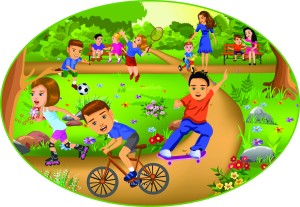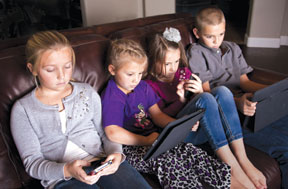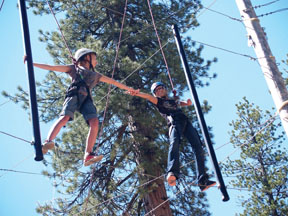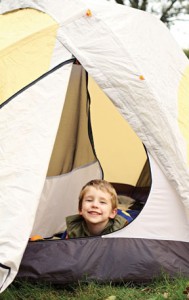OK Kids – Time for Camp!
It’s okay to admit that, after a couple weeks out of school, it’s about time to get the kids off for some energy-burning, chaperoned fun time during the day. The expansive range of Vegas day camps will do just that:
Adventure
The Ultimate Vacation Camp @ Dawson
Who: Boys & Girls Club of Southern Nevada
Where: The Alexander Dawson School
10845 West Desert Inn Road
When: June 9 – August 15 from 8 a.m. to 6 p.m.
Kids: 1st – 8th Grade
Price: $200/week or $1,800 total
Lunch: Included
www.bgchevents.org
Between ice cream sundaes, playing in the game room, a cultural art center, an acting lab, a science center and Summerlin’s longest slip’n’slide, this annual camp makes us want to be kids again! Youngsters will have a hard time being bored with daily events and, with lunch prepared daily, they definitely won’t go hungry either.
Summer Adventure Camp
Who: Springs Preserve
Where: Springs Preserve
330 S. Valley View Blvd.
When: June 9 – August 22 from 9 a.m. to 4 p.m. (extended hours available)
Kids: Ages 6-12
Price: $190/week or $170/week for members
Lunch: Not Included
www.springspreserve.org
Taking only 60 campers per week, this adventure summer camp focuses on personal relationships between kids and counselors along with opportunities to explore nature, sustainability, local wildlife and more. Sprinkle in noodle hockey, indoor mini-golf and swimming at the YMCA and you have something for everyone!
Sports
UNLV Youth Sports Camps
Where: UNLV Campus
4505 S. Maryland Pkwy.
When: Month of June
Kids: Varies
Price: Varies
Sports: Baseball, Softball, Football, Men’s/Women’s: Basketball, Soccer, Volleyball, Swimming, Tennis, Track & Field, Rebel Girls Dance Camps, Cheerleading.
www.unlvrebels.com/camps
Give the gift of sport to your kids during their time off school. Sure to spin off passionate enthusiasts from each camp, allowing for organized sport will give them the chance to experience and learn a skill they will take with them for life. Choose one or even a few throughout June!
Darling Tennis Camp
Where: Darling Tennis Center
7901 W. Washington Avenue
When: Sessions run June 9 – August 15 from 9 a.m. to 12 p.m. or 9 a.m. to 3 p.m.
Kids: Varies
Price: $110 for half day/ $190 for full day with options for before and after care
www.darlingtenniscenter.net
For those interested in practicing “The Sport of Kings,” Darling Tennis Center offers a USTA certified training center and High Performance Training Program for kids ages 6-18 and all skill levels, including practice and match play options throughout the week.
Science/Art
Discovery Children’s Museum
Where: Discovery Children’s Museum
360 Promenade Pl.
When: July 7 – August 1 from 8 a.m. to 12 p.m. or 1 p.m. to 5 p.m.
Kids: Ages 6-9 or 10-12
Price: $180/week per session (half day)
Lunch: Can be added for $75 extra/week per child
www.discoverykidslv.org
A focus on science and art will leave kids strong in body and mind, and ensure that learning doesn’t stop just because school’s out! Depending on age, kids will go from chemistry to sculpture and from animals to space, all in one day. The possibilities are endless, and may spur an interest you didn’t even know they had!
Nevada Cooperative Extension’s 4-H Science, Technology, Engineering & Math (S.T.E.M.)
Where: Cooperative Extension Lifelong Learning Center
8050 Paradise Road
When: June 24-26 and July 15-17 from 9 a.m. to 4 p.m.
Kids: June ages 7-11 | July ages 9-14
Price: $60 per session ($45 each for siblings)
Lunch: Not Included, although snacks will be provided
Call 257-5538 for more information.
With a focus on S.T.E.M, this summer camp promises to open kids up to concepts and knowledge that will change their lives for the better. From healthy eating and cooking to working with computers, 4-H delivers an enriching camp experience sure to grab their attention and curiosity!
No matter the camp you choose, allowing kids the time to engage with others in a fun, learning environment and keeping them active during the summer months can’t be a bad thing!
Off the Grid – Keeping Family Screen Time to a Minimum
By Jennifer Vandenberg
With today’s endless proliferation of TV, video games and internet, there is no shortage of reasons for today’s kids to become couch potatoes. The American Academy of Pediatrics has linked excessive “screen time” to obesity, attention problems, trouble with sleep, impaired academic performance and more. Per their recommendations, children over the age of two should have “no more than one or two hours” of screen time per day.
Of course, things can get out of hand during the summer, when it’s often too hot to play outside and there aren’t many options to keep the young ones occupied. The good news is that weekend and summer screen time have not been associated with lower school performance in the way that weekday screen time has. But as school starts up once again, every day is no longer a vacation, so it’s a perfect time to consider family media use.
As with anything else, it’s good to set a plan from the beginning, which should make it easier to monitor your screen based entertainment time. Below you’ll find suggestions on setting goals and drawing boundaries to help make things easier on the whole family.
Chart Your Time
Start out by spending a few days charting media use for each family member. Everything counts: the morning news that nobody is really watching, the YouTube clip your teenager needs to view for homework, the ballgame that is on in the background at dinner time, video games and the time spent texting or posting on any kind of social media sites.
Use this charted data to help create a media plan. Set a limit on TV time and encourage your child to choose only their favorite shows to watch and favorite video games to play. Schedule “black out” hours when screen time is not acceptable, such as dinner or family gatherings. The DVR can be one of your best friends in this situation. Record shows your kids want to watch and skip through the commercials. This can cut TV time by a third!
You can even have kids use timers to help limit themselves; giving them some control should help make them more eager to participate. Make sure the media plan takes into account the time they spend at friends’ houses as there’s no sense setting a plan if the kids are going to “cheat” by spending unlimited amounts of screen time somewhere else.
Out of Sight, Out of Mind
Often times, the media distractions available to our kids are taken advantage of just because they are there. By finding ways to limit the presence of electronic media, you should be able to keep a better hold on limiting screen time. Consider these suggestions:
- Move the computer to the family room. Not only does this allow you to keep better tabs on internet use, but teachers also recommend that homework is best done in a communal area so parents can provide help and curtail time wasting.
- Cell phones should be kept out the bedroom at night. Your teen is not likely to get a restful sleep if they lie awake texting with friends until three in the morning.
- Remove the TV from your child’s room. This can be tough to handle, especially if they’re used to having one, so you can start by removing it only on weekdays.
- Establish “bedtime” for screens in addition to bedtime for the kids, preferably not too close to each other so that kids can settle down from media over-stimulation.
Lead By Example
No matter what suggestions you decide to follow for your kids, make sure you are keeping up your end of the bargain by monitoring and restricting your own screen time. Consider removing the TV from your own bedroom, canceling cable or eliminating “background” television like morning programs or afternoon talk shows. If you’re a sports fan, think about subscribing to nfl.com and/or mlb.com to follow your teams via internet radio broadcasts instead of ESPN. As a bonus, you’ll save hundreds of dollars.
Limiting screen time is not about deeming television sets and computers as evil but more about finding the balance between media and other activities. By setting the right boundaries and getting everyone in the family to participate, it can be a useful activity that encourages more communal bonding and improves everyone’s all around well being.
Summer Camp Preview
By Mike Sweeney
Before you know it, school will be out for summer and the kids will have free run of the house and the neighborhood until fall dawns once again. Whether your kids are seeking an exciting new experience or you’re looking to give them something to fill the hours, there are a host of great camps in and around the Las Vegas valley offering a wide range of super summer fun.
Academic Camps
Summertime isn’t all fun and games; some students need extra help for the school year ahead. Tutoring Club is here to help build the foundation needed for academic success with a series of 32-hour camps and 25-hour workshops between June 10th and August 22nd. The camps will cover subjects including reading, writing and math, while the workshops will help older students prep for the SAT and ACT. It’s the perfect way for students to sharpen their skills before diving into next year’s pool of textbooks and homework. Visit www.tutoringclub.com for more info.
Griffin Learning will also offer an academic day camp for children nine through twelve, held July 8th – 26th. Daily activities will consist of math problem solving, writing, science, art projects and beginner’s Mandarin. No need to worry about your kids getting lost in the shuffle as class size is a maximum of nine students to ensure individual attention. Limited spots for all courses and slots are given on a first come basis. Visit www.griffinlearning.com for more info.
Kids can spend part of their summer discovering the wonders of math and science at the 4-H Science, Technology, Engineering and Math (S.T.E.M.) Day Camps, held at the Lifelong Learning Center. The first session will run from June 11th – 13th for ages seven to eleven with another held June 25th – 27th for ages ten to fourteen. Participants will engage in hands on experiences that foster exploration, discovery and passion for the sciences, encouraging them to excel and find success in their respective fields. Visit www.unce.unr.edu/4H for more info.
More summer fun in the scientific world awaits with Mad Science, teaching everything from crime scene investigation to rocket building to robotics. Kids will love joining in the crazy experiments as they explore all the fun facts and delights this educational camp has to offer. Programs are offered at various locations all through the summer, with Junior Mad Science Camps available for the pre-school set. Visit www.madsciencelv.com for more info.
Bright Child Learning Center offers exciting activities and a fun educational experience at their eleven-week summer program at their Nellis and Owens location for ages five to twelve. Camp begins on June 10th and allows kids to explore a new and interesting theme-oriented learning program each week, along with field trips to the Adventuredome, the Planetarium, California Pizza Kitchen, water parks and more. Visit www.brightchildlc.com for more info.
Day Camps
Henderson International School’s beautiful campus plays host to the Summit Ridge Day Camp from June 10th – August 2nd for children aged four to twelve. Campers are broken into co-ed groups based on age and/or grade level and experience a wide range of activities that change daily, including aquatics, dancing, arts and crafts, music and more. Special guests will be on hand for unique activities and Spirit Days, including a Talent Show, Pancake and Pajama Day, Color War and all-camp songs and games. Visit www.summitridgedaycamp.com for more info.
Boys & Girls Clubs of Henderson holds their Ultimate Vacation Camp from June 10th – August 9th on the campus of The Alexander Dawson School in Summerlin. Campers spend the day rotating through the gymnasium, games room, cultural art center, outdoor play area and more. Special events add to the exuberance with everything from slip and slide to safari visits to Mardi Gras parties. Lunch is prepared by the Alexander Dawson School culinary team and is included in the weekly registration fee. Call 565-6568 or visit www.bgchenderson.org for more info.
A long standing summer ritual, YMCA Day Camp offers traditional camps where kids can enjoy themed weeks that include swimming, arts and crafts, group games, gym time and more, all while developing a strong sense of character and fulfillment. Exciting field trips will also take kids all over town to Springs Preserve, Sky Zone, Shark Reef, the Discovery Museum and more. Camps are offered at various YMCA locations throughout the valley from June 10th – August 23rd, with campers broken down by age group. Visit www.lasvegasymca.org for more info.
If big thrills are your game, you’ll find them at the Springs Preserve Summer Adventure Camps. Where else can you face off with a Gila monster, get creative with eco-friendly crafts, head for a nature walk and explore amazing museums all in one place? Kids can even act out and get silly on stage and enjoy swimming at the nearby YMCA. Educational experts keep things fun and ensure that learning is a big part of the process. Sessions run Monday through Friday from June 10th – August 23rd for ages six to twelve. Visit www.springspreserve.org for more info.
Sleepaway Camps
When the weather turns warm, it’s the perfect time to head for the mountains. Camp Lee Canyon hosts Omni Discovery Camp, held July 14th – 19th for ages eight to twelve. Campers will participate in fun classes in art, science, nature, music, sculpture, geocaching and even a high ropes challenge course, along with traditional camp activities such as hikes, archery, campfires, sing-a-longs and more. Guest instructors include people from Sign Design Theatre and Airborne Raptors to Roos N More and Mad Science. Visit www.clarkcountynv.gov/parks for more info.
On the Edge Camp, also at Camp Lee Canyon, runs from July 21st – 26th for ages thirteen to fifteen. Outdoor adventure is the name of the game here with recreation activities such as a high ropes challenge course, mountain biking, hiking, a one-night camp out under the stars and a dance with a live DJ spinning all the best tunes. As with Omni Discovery Camp, traditional camp activities will also be included, so campers need not worry about missing out on any of the fun around the campfire or on the hiking trail. Visit www.clarkcountynv.gov/parks for more info.
For something a bit different, Camp Lee Canyon will also host ICAN Leadership Camp from August 4th – 10th. Open to middle and high school kids, this camp helps teach drug prevention and leadership skills through guest speakers, group building activities, community action group planning and more, along with campfires, hikes, a talent show and a camp dance. Small group activities are led by older participants, creating a unique atmosphere where the “youth staff” help instruct and inspire younger campers. Call 451-ICAN or visit www.icanlv.org for more info.
Athletic Camps
UNLV has helped Las Vegas build a legacy of great basketball, and your kids can be a part of it with Advantage Basketball Camps at the Tarkanian Basketball Academy. Kids from six to eighteen learn ball handling and shooting drills, court awareness, how to play good defense and so much more. With sessions held from June 17th – June 21st and August 5th – August 7th, it’s sure to be a slam dunk for summer fun! Visit www.advantagebasketball.com for more info.
ASMT Cheer and Tumbling Summer Day Camps helps teach cheerleading fundamentals, including motions, dance and tumbling, all in a fun and safe environment. The company’s North Gym on West Cheyenne offers a three day camp from June 10th – 12th, while the East Gym in Henderson holds camp from June 24th – 28th. Dance camps will also be available during June and July, teaching hip hop, pom, jazz and more. Visit www.asmtacademy.com for more info.
Enjoy the fresh air at Four Views Equestrian Horse Camp, located near Tule Springs in the northwest, which offers riding lessons, bareback riding, horsemanship, grooming, arts and crafts, games and much more. Sessions run throughout the month of June with the “Lil Breeches Camp” for ages four to six and the “Long Stirrup Camp” for kids seven to fourteen. Catered lunches will be provided in the cool, air conditioned clubhouse. Visit www.4viewslv.com for more info.
For kids looking for summer fitness fun, Water Wings Swim School offers a Sports Summer Camp teaching swimming, children’s MMA and CrossFit to help campers stay active while having an energetic good time. Physical trainers will always be on site, ensuring that all participants have an exciting and safe experience. Two week sessions run Monday through Friday from June 10th – August 9th. Visit www.waterwingsswimschool.com for more info.
For a big dose of racket swinging fun, Darling Tennis Center Summer Camp provides an array of comprehensive programs for ages three and up at the Kellogg-Zaher Sports Complex. With sessions running all the way from June through August, the professional coaching staff will help kids get fit, have fun and develop their tennis skills while also offering activities such as water sports, movies, arts and crafts and more. Visit www.darlingtenniscenter.net for more info.
Arts Camps
For kids with an interest in the world of couture, Fashion Camp LV presents a creative learning space centered on fashion at Market Center LV at Tivoli Village. Week-long sessions run throughout the summer and teach campers from age seven to seventeen about the design process, from sketching and creating new ideas to draping to hand and machine sewing. Even if you’re new to fashion, all skill levels are welcome! Visit www.fashioncamplv.com for more info.
A big dose of art-rageous fun comes to life at the specialty camps offered by Art Starts Here and Drama Kids at the Art Starts Here Studio on West Lake Mead. Drama Kids encourages participants to “act up” with a purpose and helps to build confidence, speaking skills and acting skills through a creative curriculum. Art Starts Here lets campers join the dynamic Debbie Levy to learn the fundamentals of art, music and art history while engaging in painting, sculpting and even prop and set design, all while boosting their creativity and self esteem. Multiple sessions run from June 10th – August 16th for ages six to ten. Visit www.artstartshere.com for info.
For those campers who want a summer full of righteous tunes, School of Rock Summer Camp helps kids of all different skill levels find their music mojo. Rock 101 offers sessions in July and August and helps students master the basics. Performance Camp runs July 15th – 19th and allows campers to meet and interact and perform on the last day for friends and family. Songwriting & Recording Camp is held July 22nd – August 2nd and teaches kids the creative and technical process behind creating original material. Visit www.lasvegaswest.schoolofrock.com for info.
The Smith Center for the Performing Arts will once again offer Camp Broadway, which gives participants a chance to engage in creative expression, build confidence and immerse themselves in Broadway’s most cherished works of musical theater and drama. Trained Broadway professionals provide hands-on instruction steeped in the traditions of the Great White Way. “Shining Stars Camp” for ages six to nine runs from June 17th – 21st while the “Classic Camp” for ages ten to seventeen lasts from July 8th – 12th. Visit www.thesmithcenter.com for more info.
From traditional campfires and sing-a-longs to learning new academic skills to expanding their artistic and creative horizons, there is a summer camp out there for just about any kid looking to try something new and exciting or just spend some fun times making new friends. Set them up with one of these great experiences and it’s sure to be something they treasure for years to come.
Better Safe Than Sorry…Fire Prevention During the Holidays
‘Tis the season for at-home entertaining. Food, friends, family, fun – and yes, even fires. Firefighters respond to calls of nearly 400,000 home fires each year, according to the National Fire Prevention Association (NFPA). Many fires occur in cold weather as more people bring warmth into their homes with things like traditional candles or holiday lighting. These fires result in more than 15,000 civilian deaths or injuries annually, so it’s a good idea to fire-proof this season with these tips that will help safeguard your family and home.
Go Flameless
Reduce your risk of fire by using flameless candles. Though they look and smell like real candles, they don’t pose the same risks. Scentsy Wickless Candles provide the light and ambiance of traditional candles without the smoke, soot or open flame. With more than 80 fragrances to choose from and 100 styles of warmers available, there’s a fit for every personality and home décor.
Avoid Outlet Overload
Don’t overload electrical outlets and extension cords with holiday lights or other electronics. Plug only one heat producing appliance into a receptacle outlet at a time, whether it’s an electric blanket, iron, toaster, coffee maker or anything else. Choosing battery powered options whenever available can help go a long way toward avoiding the risk of overload.
Cook With Care
Unattended cooking is the leading cause of U.S. home fire injuries, according to the NFPA. Don’t stray too far from the kitchen if you’re frying, grilling or broiling food. If you’re boiling, baking or roasting, be sure to check it regularly and use a timer to remind you when it’s finished. Plug microwave ovens and other cooking appliances directly into an outlet; never use an extension cord for a cooking appliance, as it can overload the circuit and cause a fire.
Be Prepared
Establish a fire-safe home by installing fire extinguishers and smoke alarms. Use a portable fire extinguisher to save lives and property by putting out or containing small fires, and always store extinguishers where they can be quickly accessed in areas with greater fire risk, such as in the kitchen or near the garage door. Smoke alarms should be installed in every room of the home, except for the kitchen, and should be tested once each month.
Set up a fire escape plan with the members of your household and practice it often. Always have two ways to exit each room, typically a door and a window. Practicing in a casual environment will help children feel confident in executing your plan during an emergency. Choose a landmark outside, such as the neighbor’s yard or the mailbox, as a meeting location for your family.
The holidays should be a fun and relaxing time for all. By following these fire safety tips, you can help ensure your memories of this winter season are full of friends and family, not flames.
Beyond Open House –
By Jenna Vandenberg
Whether you have a five year old about to start kindergarten or a senior who’s counting down the days until graduation, the best way to make sure your child succeeds in school is to keep parents, teachers and students communicating effectively. Good habits of interaction should be introduced early in elementary school and carried on and improved upon through high school to help keep your son or daughter on track for a fulfilling and successful education at all levels.
Elementary School
At the elementary level, tech savvy teachers are forgoing printed newsletters in favor of a teacher website, often called a “wiki.” These can be checked daily for spelling words, links to online math games, field trip information and picture dates. If your child’s teacher doesn’t have a website, look for a weekly newsletter or homework sheet and display it prominently at home.
If you have a concern or question not addressed on the teacher’s wiki or newsletter, get in touch with them. All teachers welcome parent communication, but each will have their own preference. Some may swear by email, while others don’t take a seat at their computers until students are long gone. Many prefer a phone call or text message, while others would rather you send a note with your child so they can get back to you at a convenient time. With all these options, your first conversation with your child’s teacher should inquire about the preferred method of contact.
Middle School
Parent communication often drops off at the middle school level, right when it should be picking up. Don’t let the fact that your child has six or seven teachers stop you from getting to know each of them. Ask them about grading, homework and your child’s academic and social performance in class. Once teachers have met you personally, they are more likely to invest a little extra time in your child, which is very important at the middle school level to prevent kids getting lost in the shuffle. Wait until November or December to schedule a meeting. At this point, all the teachers should know your child well and there should be plenty of time to address any problem.
If your child is having behavioral challenges, consider spending a day shadowing him or her from class to class. Shadowing not only gives you insight into struggles your child may be having, but it also sends a clear message that you take their education seriously. The embarrassment factor is usually enough to shape up any unruly middle school student. Be sure to check in with the school in advance for permission and stop by the office for a visitor’s pass.
High School
Are you willing to serve on the PTSA, sit on a panel to critique student presentations, talk about your job during career day, help during school celebrations or present specialized information to classes? If so, let the principal and the front office know. Volunteers are more common at the elementary level, but it’s even more important for parents to stay involved during high school. This will help put you in good graces with your son or daughter’s principal and counselors – the very people who will be writing your child letters of recommendation for colleges and jobs.
Regarding your college bound high schooler, know that even the most well behaved students skip class. Schools attempt to curb this behavior by having a phone system that automatically notifies families of a child’s absence so they can keep track of just how much school their child is missing. Students are well aware of this fact, however, and go to great lengths to file an incorrect number or have the calls directed to their own cell phone. Stay one step ahead of your child by contacting the school to ensure the number on file is your own work or cell number.
For additional support, the Clark County School District provides a service known as ParentLink, where you can see all of your child’s classes, attendance data and grades. You can obtain a login and password from your child’s school and access ParentLink via www.ccsd.net.
Talking About School
Making school a subject of conversation at home is the best way to reinforce the learning process. Don’t accept a blanket response of “fine” when asking your child about his or her day. Find out what books the class is reading, what science experiments were done and what debates have been taking place in social studies. And don’t glaze over when the conversation turns to math! If you don’t remember quadratic equations (let alone how to solve them), have your child explain them. These simple talks can help make lessons meaningful and school more relevant.
Between buying school supplies, setting up homework space and packing lunches, September can be just as busy for parents as it is for students. Give your family time to settle back into those school routines, but be sure to meaningfully engage with teachers before November or December. Attending open house and parent teacher conferences are great first steps, but keeping the lines of communication open all year is essential to your child’s success in school.
School Is Back In – And Physical Fitness Is Too
By Dr. Michael Crovetti
With summer vacation already behind us, our children are preparing to hit the books for the new school year. We all know what that means; more work, less play. But just because leisure time is shortened, that doesn’t mean keeping our children active and fit should take a back burner to studies. To the contrary, staying active throughout the year helps children maintain a healthy lifestyle and positive mental attitude while warding off the dangerous epidemic of childhood obesity.
According to the American Academy of Pediatrics, children and adolescents should stay physically activefor at least 60 minutes per day, but not necessarily all at the same time. While adults have the capacity to grind out an hour of structured, programmed exercise like aerobics or circuit training, children and some teenagers need more flexibility to keep their interest. For that reason, it’s advisable to break the 60 minutes of activity up throughout the day. Adding variety and, most of all, fun will help out as well.
The Daily Dose
Fortunately, most Clark County schools still hold recess and P.E. class during the day for a quick boost of energy. Keep in mind, however, if P.E. class is 50 minutes, and your child spends 20 minutes of that time dressing in and out for the class, they still have another 30 minutes of activity left before they meet the requirement. Try the following tips to keep your children fit as fiddles during the school year.
Give them a choice and offer encouragement. One of the biggest obstacles to staying fit is staying motivated, and children are more likely to engage in activities they enjoy, rather than the ones they feel pushed into participating in by a parental figure. Discuss activities, games and sports your children have an interest in and actively encourage their participation.
Encourage free play. An hour at the nearby park, a bike ride around the neighborhood, a dip in the swimming pool or just simple outdoor free play are all ideal, unstructured forms of exercise that will keep your children entertained while they stay fit.
Get into the youth sports action. Along with the obvious physical benefits, organized team or individual sports are a great way to teach your child teamwork, discipline, self-confidence and social skills.
Take family walks. Why not make fitness a group thing? Taking walks before or after dinner is an easy and enjoyable way to promote activity among the entire family. It’s also a great way to spend some time together catching up on the day’s events.
Play active video games. Video games like Wii Fit and Just Dance can give your child the best of both worlds–a couple hours in front of the TV and a heart-pumping workout. They’ll be having so much fun playing, swinging and moving they won’t even realize they’re getting exercise.
Make chores part of the routine. Chores are a bore, but they’re physical. Even if your child doesn’t always have the opportunity to play, they can still burn calories doing good old-fashioned housework. Chores like vacuuming, taking out the trash, raking leaves in the backyard, cleaning their room, etc. all count toward the 60-minute-per-day requirement.
Don’t take shortcuts. Elevator and car rides? Who needs ‘em? Just as it’s recommended to adults, encourage your children to take the stairs instead of the elevator and walk or ride their bikes short distances to the store or to a friend’s house. (This has the added bonus of saving you gas money!)
In the race to get through homework, dinner and family time to bedtime, sometimes it’s easy to overlook one of the most important ingredients to healthy living. Take time to encourage activity and have fun while you’re at it! Just 60 minutes a day can lead to a lifetime of good habits and excellent well-being.
Dr. Michael Crovetti is a board certified Orthopedic Surgeon who specializes in sports medicine and joint replacement surgery. He is the Founder and Medical Director of Crovetti Orthopedics and Sports Medicine, Coronado Surgery Center and the Coronado Surgical Recovery Suites. To learn more, go to www.crovettiortho.com.
A+ for Home Economics – Back to School Savings
By Jennifer Vandenberg
Even though summer is in full swing, stores started planning for the return to school months ago. Now it’s time for families to start thinking about it too. But don’t let your back-to-school budget cut into end-of-summer fun. Every year parents waste tons of money on unnecessary school supplies. Over-zealous supply lists and a misunderstanding of what is really necessary in schools today contribute to all this overspending. Don’t get caught in the supply list “must-have” trap! Follow these trusty, teacher-approved tips on what to buy and where to save.
Never-Ending Supply Lists
Office supply stores create long lists of what students “need”. Don’t even look at these lists; they’re created to generate profit, not help out parents. It’s also wise to avoid the outdated district-wide list on the Clark County School District website (although www.ccsd.net is useful for other information). The only list you should adhere to is the one that comes directly from your child’s teacher. Still, if a teacher has a long list (seven or more items), proceed with caution. Some teachers list every possible supply they can conjure up on the off chance that students might need them. It’s best to double check with her at open house or by email to see if all those items are really necessary.
Back to Basics
Elementary teachers commonly request that students bring boxes of tissue, crayons, snacks, paper and other supplies to be shared with the whole class. It’s important to contribute to the classroom stockpile, but you shouldn’t feel like you need to buy it all. Get to know a few parents in your child’s class during orientation and make plans to divide and conquer. It’s cheaper and easier for each parent to buy one or two supplies in bulk rather than a little bit of everything.
When the sharing of supplies comes to an end in 6th grade, parents are expected to provide their children with some basic supplies. The following are a few essentials that can be purchased at those early-bird sales that, unbelievably, started in June.
Binders
For whatever reason, carrying a 3-inch binder in middle school is social suicide. Save your pre-teen the embarrassment and buy a 1-inch. Find them on sale and buy three or four because they fall apart every few months. Some schools have binder-color restrictions, so play it safe and stick with white. Make sure it has inside pockets for storage and a clear plastic cover that allows your child to slip pictures or artwork over the cover to dress it up.
Dividers
A separate space for each subject is important, but dividers aren’t the only option. Many students prefer to keep several plastic sheet protectors (one for each class) in their binder for papers. This allows students to stay organized without having to hole-punch everything. Pre-hole-punched folders that can fit inside binders are another option.
Paper
Paper is an absolute necessity. Stores such as Target and Wal-Mart supply the cheapest year-round, but office supply stores also have great back-to-school deals. Buy several packets of lined, loose leaf paper. (College ruled for high schoolers and wide ruled for elementary. Anything goes in middle school.) Dole out paper in small quantities throughout the year; this will save your child from supplying classmates with paper or wasting it making paper airplanes.
Pens and Pencils
While pens and pencils are another necessity, it’s not always necessary to buy them, particularly expensive brands, as they will likely just get lost. Sift through your junk drawer or purse for extra pens and pencils. Collect free pens wherever you can–hotels, casinos, festivals–and hand them off to your kids. Even middle schoolers don’t make fun of someone who’s writing with a non-brand-name pen.
Hold Off on the Extras
As a general rule, after acquiring a binder, dividers, paper, pens and pencils, don’t buy anything else until you get a supply list from the teacher. “I hate when kids show up with weird pencil sharpeners and markers,” says 4th grade teacher Allie Pokornik, “It’s such a distraction.” Many teachers keep classroom sets of highlighters, glue sticks, pencil sharpeners, staplers, scissors and the like, so check with the teacher before buying any of these extras. If you do choose to purchase them, save some cash by sticking to off-brand supplies. Crayola color pencils are twice the price of RoseArt with no quality difference. Have your child label their personal items, but even with this safeguard they will more than likely get lost before Christmas. It’s best to keep these supplies at home.
Check with the school before purchasing a backpack as well. Due to budget cuts, many schools don’t have enough textbooks to go around. Without books to carry, there really is no need for a backpack. Also, a higher density of students per school means there are not enough lockers for backpack storage, and they are often disallowed in the classroom due to safety and space concerns. If this is the case for your school, buy a pencil pouch that fits inside a binder to keep any loose items secure. Items to skip altogether include permanent markers (schools don’t allow them due to tagging concerns); white out, which is often used solely to paint fingernails; and Clorox wipes, as they are banned in the Clark County School District.
Back-to-school shopping boils down to two principles: shop savvy and save where you can. Better to pinch a few pennies for that last summer fling than buy a bunch of stuff that will be relegated to the back of the closet.
Happy Campers – Busting the Boredom Bug
By Lindsay Minor
Spring has sprung and summer’s just around the corner. While tons of video game time and lazy hours in front of the boob tube may sound awesome to kids at first, most parents will inevitably hear the sad cries of “I’m boooored!” sooner or later. Camps can be a great way to keep kids engaged and happy during summer months, and it’s great for their health, too. According to Dr. Monica Lounsbery, Professor and Director of the Physical Activity Policy Research Program at the University of Nevada Las Vegas, “Organized programs like summer camp help to provide the 60 minutes of moderate to rigorous exercise kids needs each day.” They also offer children the chance to be around positive role models, make friends, learn new skills, gain independence, build an appreciation for the great outdoors and make memories that last a lifetime. Squash that boredom bug before it bites! Research the right camp for your child and register today!
Outside and Outta Sight
Outdoorsy types, thrill-seekers and even their shy counter-parts will have a blast at one of Camp Lee Canyon’s six-day youth resident camps. Located in the Spring Mountain Range just 45 minutes from Las Vegas, cool air, rustic cabins and natural beauty set the scene for good, clean fun. Challenging and exciting, On the Edge Camp for teens features daring activities such as the High Ropes Challenge Course, a one-night campout, hiking, crafts, sports, mountain biking and a Thursday night dance with a live DJ. Children ages 8 to 12 can experience Omni Camp, where they’ll learn about the unique beauty and eco-system of the surrounding woodlands through workshops, arts, sciences and experiential outdoor education. Campers stay in group cabins supervised by trained counselors in a ratio of 8:1. Camps cost $400, inclusive of catered meals, snacks, class supplies and a camp t-shirt. Call 455-1905 for more information.
Cool Schools
For a day camp closer to home, Summit Ridge Day Camp at Henderson International School features a world of possibilities in sports, arts and crafts, water activities, games, computer use and even movie-making fun. Kids ages 4 to 11 will enjoy more than 20 activities during their camp experience. One unique aspect of Summit Ridge Day Camp is that parents are invited to help design their child’s experience. If you want to keep academics alive during the summer break, Summit Ridge can help. Camp begins June 13 and ends August 5. For more info, visit www.hendersonschool.com or call 818-2149.
During the normal school year, Coral Academy of Science is a charter school on a mission to provide a challenging educational environment for students which will promote academic and social success during and beyond their high school years. With that same commitment to molding well-rounded individuals, their summer camp, held at the Sandy Ridge Campus, offers a number of educational activities in science, math, reading and English, along with fun arts and crafts and field trips to local attractions and museums. Competitive types and any kid just looking to have some fun can also match skills with new friends in chess, table tennis, basketball, soccer and volleyball. These full day camps are appropriate for ages 5-17 and will take place from June 13-July 29. Additional details are forthcoming, so keep an eye on www.coralacademylv.org for updates or call 776-8800 for details.
And not to be overlooked, Las Vegas Day School is offering the Ultimate Summer Camp 2011 for the ultimate summer adventure. A place where kids are encouraged to just be kids, “laugh”, “be silly” and “act your age” are some of the instructions at this summer long camp open to children in first to eighth grade. What’s more, each week-long camp will have a festive theme like Mardi Gras, Fiesta, Luau or Carnival. Campers will be treated to exciting rounds of air hockey, basketball, painting, swimming, watching movies and more for nine hours per day, including a break for a catered lunch and fun desserts! Eight sessions are offered beginning June 20th and running through August 12th. Call 362-1180 or visit www.lvds.com for info and let the wackiness ensue!
The Budding Performer
Dancers prepare to get in the zone at Dance Zone. Each week-long camp revolves around dance, but exciting themes offer a little something for everyone. There’s no limit to the fun kids can imagine during Imaginarium week June 13-17; they’ll be honing their dance skills and creative sides through crafts, writing, skits and more. During Out of This World week June 20-24, kids will have cosmic fun in outer space with activities focused on space, planets and the solar system. Super sleuths will have to follow the clues to discover the mystery during Mystery Quest July 11-15; dancers will learn just how awesomely Royalty Rocks July 18-22; sporty fun will abound during Sportacular August 1-5; and the whole journey ends on a high note in Adventureland August 8-12. For rates and more info, call 897-5690 or visit www.thedancezone.com.
Finally, be sure to check out your local Parks and Recreation departments of Henderson and Las Vegas for even more fun in locations across the valley. Most offer affordable weekly programs in a variety of activities. Ultimately it doesn’t matter if your child spends the summer making art, dancing, learning the laws of science or just smashing the ping pong record; a young body and mind in motion is a happy one.
More Fun for Everyone
When it comes to summer camps for kids of all ages, Las Vegas doesn’t disappoint. Here are just a few more camps for your consideration.
Drama Kids International of Las Vegas: The perfect stage for your little star, Drama Kids allows campers to shine through theater games, skits, creative movement, mini scripts and more. Ages 5-11. Visit www.dramakids.com/nv1 or call 870-4354 for info.
Camp Zone at Merryhill Elementary: Sports fans, nature explorers, artists, aspiring actors and more will love all this camp has to offer, including outdoor hikes, performances, field trips and surprise speakers. Ages 5-14. Visit http://summerlin.merryhillschool.com or call Nicole Hanson at 242-8838 for details.
Mad Science: Kids age 4-12 will learn about science, including biology, space, robotics, botany, flight and more through hands-on activities and experiments. For details, visit www.madscience.org/lasvegas or call 257-6231.
Anthem Country Club Camp: Open to Anthem Country Club members and their guests, this full and half day camp includes swimming, basketball, tennis, golf, arts and crafts, drama/acting, mad scientist and nutrition. Contact Ray Flis at rflis@anthemcc.com or 614-5035.
Las Vegas Riding Academy: For the child interested in all things horses, the academy offers lessons in roping, riding, animal care and crafts. Ages 6-17. Visit www.lv-ra.com for details.
Leadership Camp: The seven-day camp held at Camp Lee Canyon will consist of speakers, workshops and curriculum to educate and empower young adults. Ages 11-17. Visit www.icanlv.org for more info, financial aid applications and registration.
Family Fun in the Sun – Outdoor Activities for Health & Happiness
By Michelle Vessel
What do Hawaii, Florida, Arizona and Louisiana have in common? Aside from temperate climates and a cultural appreciation of the great outdoors, these states share another characteristic–they’re home to the happiest people in the United States. According to a four-year study conducted by researchers at the Centers for Disease Control and Prevention, residents of states that boast plenty of sunshine consistently describe themselves as happier and more satisfied with life than those who make their homes in colder, gloomier climates. It’s not just adults that are reaping the benefits of the sun’s powerful rays either. Our children are too, and with mounting evidence that exposure to the outdoors and sunshine are an important part of our overall health and wellness, we’ve plenty of reasons to get the whole family outside to soak up some of nature’s very own miracle drug.
A Natural Fit for Kids
For as long as humans have been seeking indoor shelter from the elements, little ones have been clamoring to play outside, with reasons that go well beyond fun and games. In addition to bolstering the production of vitamin D, which is essential to overall health, research also suggests that spending time outdoors in the sunshine has positive effects on the psyche.
Doctors have prescribed short periods of sun exposure to patients suffering from depression, anxiety, Seasonal Affective Disorder and other mental health problems for decades. Sunshine, it seems, stimulates the secretion of serotonin, the ‘feel-good’ hormone that affects mood, emotion and sleep. As a result, a daily dose of sunshine has the power to decrease depression, boost happiness and increase overall well-being in people of all ages. For children, in particular, the trickle down effects of this response include decreased stress levels, better impulse control and more developed coping mechanisms. As Frances Kuo, a scientist at the Landscape and Human Health Laboratory at the University of Illinois, puts it, outdoor play brings about a sense of “gentle absorption; almost a meditative quality” that is “deeply rejuvenating” for children.
What’s more, outdoor play is an important tool in the fight against the childhood obesity epidemic. Although children can and do play energetically indoors, the range of motion and level of exertion that kids can achieve in, say, the living room is limited in comparison with the neighborhood playground. That’s why advocacy groups and organizations ranging from the National Wildlife Federation to the Surgeon General have suggested the goal of the “green hour,” encouraging families to strive for up to an hour of unstructured outdoor playtime each day.
Bright Sunshiny Days
Ready to boost your family’s wellness with a healthy dose of outdoor fun? The old rules of carefully limiting sun exposure still apply, but you can bend them a little, according to Boston University’s Dr. Michael F. Holick, M.D. For most teenagers and adults, a stint of 10 to 15 minutes of outdoor time each day, sans sunscreen, can be enough to enjoy optimal health benefits without putting your skin at risk of sun damage. For younger kids and toddlers, even five to ten minutes may be enough to do the trick. After that, slather on the sunscreen and don protective hats and other gear while enjoying a variety of fun and educational activities.
- Get crafty. Use the sun’s rays to create one-of-a-kind crafts with photosensitive paper (available under the brand name Sunprint for less than $10 from online retailers such as www.onlinesciencemall.com).
- Enjoy the bounty of the sun. Dig a small, kid-friendly garden plot in your backyard, or take the family to a pick-your-own orchard or farm. Gilcrease Orchards (7800 N. Tenaya; 409-0655) is an excellent local resource offering year-round family events.
- Go fly a kite. Kids of all ages will thrill at the sight of their favorite animal or cartoon character swirling high in the sky. This is a great outdoor activity for the windy springtime.
- Organize a water balloon fight. Assign the neighborhood kids to two or more teams, lay down some ground rules to make sure no one gets hurt and go to town.
- Spot some feathered friends. Bird-watching is a great outdoor activity that even the tiniest tots can get into. Keep it interesting and educational by tracking birds family members have spotted in a journal. The Henderson Bird Viewing Preserve (350 E. Galleria Dr.; 267-4180) and the Wetlands Nature Preserve (7050 Wetlands Park Ln.; 455-7522) are great sites for this activity.
- Host a colorful critter. Catching a ladybug or firefly and keeping them in a jar with air holes overnight should be a summertime rite of passage for kids.
- Jump around. Old favorites like hopscotch and jump rope never lose their fun. Plus, they’re great forms of exercise that parents can benefit from just as much as the kids.
- The sky’s the limit. For a special treat, take your family on a hot air balloon ride. Check www.hotairballooning.com to find a service in your area.
Don’t fear the sun’s rays; bask in them. In small doses, this miraculous source of light can be a boon to your family’s health and well-being.
Kids in the Kitchen – Family-Friendly Cooking Activities
By Michelle Vessel
If echoing cries of “Mom, I’m hungry!” and “Mom, I’m bored!” are pretty much non-stop occurrences around your household, it may be time to introduce your kids to a hobby that can solve both of these problems in one fell swoop: the wonderful world of cooking. From barely-walking toddlers to teens on the verge of setting off on their own, there’s plenty of fun – and practical value – to be gained from spending time in the kitchen with your kids.
A Recipe for Success
According to Jennifer Low, author of Kitchen for Kids: 100 Amazing Recipes Your Children Can Really Make, cooking and baking call on a broad spectrum of skills and talents that will serve kids well throughout their entire lives. In addition to boosting their practical know-how and instilling a sense of how to find their way around a kitchen, cooking activities can help kids cultivate healthy eating habits and teach basic facts about nutrition. What’s more, registered dietician Susan Moores, a spokesperson for the American Dietetic Association, says that even the pickiest eaters are more likely to sample new foods if they had a hand in the meal preparation process.
Age-Appropriate Fun in the Kitchen
No matter what age group your child falls into, there’s bound to be something they can do in the kitchen. The trick lies in doling out age-appropriate tasks that are challenging and engaging without being overly complex or potentially dangerous.
Toddlers – For the littlest helpers, imitative kitchen play may be the best place to start. Set up their play kitchen while you make dinner, or give them a few safe pots, pans and utensils to play with. Once kids are old enough to follow simple instructions, have them rinse vegetables, carry discarded items to the trash can, stir foods that aren’t currently cooking and add sprinkles to baked goods.
Preschoolers (3-5) – Kids in this age group are often very enthusiastic kitchen helpers. Keep tasks relatively short and break up activities into distinct chunks, allowing them to assist by stirring foods, retrieving specific ingredients or (non-sharp) tools, adding pre-measured ingredients or tearing vegetables like spinach or lettuce. Older preschoolers with advanced motor skills may be ready to measure liquid or dry ingredients and crack eggs.
Primary grades (6-9) – This phase of childhood usually represents the height of pickiness and food selectivity, so give your child every opportunity to branch out by assembling and measuring ingredients, reading recipes, or stirring foods that are simmering over low heat in a sauté pan (under adult supervision, of course!). Pre-made components are a great way to encourage independent cooking skills, so stock up on things like pre-cooked pizza shells, frozen waffles, or steam-in-the-bag vegetables that can be used as a base for complete meals.
Tweens & Teens (10 & up) – Kids in this age group are usually ready to take on basic recipes with moderate supervision. Straightforward tasks like baking cookies from scratch, whipping up a batch of pancakes or French toast, or preparing a simple pasta dinner should be well within their abilities, especially with a bit of adult help and encouragement. As teens get older, many are ready to take on even the most challenging of cooking tasks. However, don’t assume too much; they may have difficulty winging certain skills without input from a knowledgeable adult. Within reason, feel free to give your teen free reign in the kitchen, reinforcing safety guidelines and setting clear expectations about after-meal cleanup. Begin introducing them to other aspects of food preparation, such as meal planning, budgeting and grocery shopping.
Take it to the Next Level
Now that you’ve introduced your kids to some basic cooking techniques, it’s time to branch out. Here are some project and activity ideas to entertain and educate the budding chef in your family.
Plant a kitchen garden – Take cooking a step further by growing your own ingredients. Opt for a large plot garden or stick with a few containers on your back porch, growing kid-friendly favorites like strawberries, watermelon, and pumpkin. Sneak in a few veggies for extra credit.
Cook up a science project – Measuring, mixing, blending – many of the basic techniques that you use when following your favorite recipe – can also be applied to science activities. Check the “recipes” listed on the website bizarrelabs.com for ideas and inspiration.
Plan a cuisine-themed party – If your pint-sized chef has some likeminded friends, consider hosting a cooking party. Assemble a make-your-own-pizza station, and then have the kids bake and decorate cupcakes for dessert. Spice things up with a Top Chef-style contest scaled back to match your child’s skill level.
Spend time with an expert – If your child shows a real flair for cooking, it may be worth it to invest in a cooking class. National chains like Whole Foods and Sur la Table often offer kids’ cooking classes; check with retailers in your neighborhood for specific details.
Cook by the book – Need some inspiration? Check out classic kids’ cookbooks from luminaries like Rachel Ray, Paula Deen, Emeril Lagasse, Martha Stewart and Williams-Sonoma.
Teaching your favorite foodies-in-training how to wield a spatula and crack an egg is just one part of spending time together in the kitchen. With a repertoire of basic techniques at their disposal and a little imagination, there’s no limit on the fun you can have with your kids in the kitchen, whether they’re toddlers, teens or somewhere in between.
















